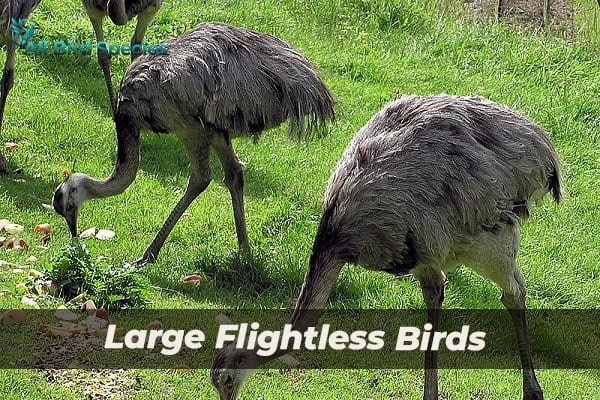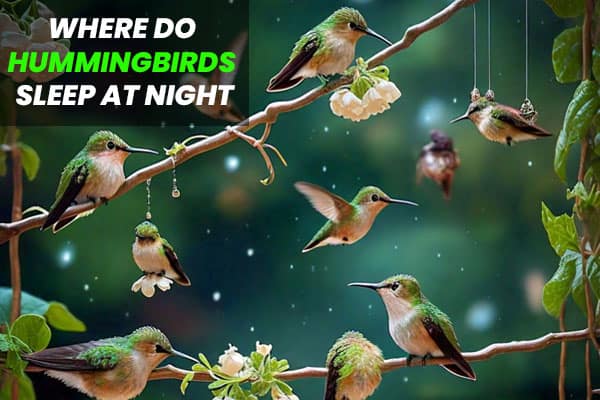Large Flightless Birds In The World (With Pictures)
In the diverse tapestry of the avian world, large flightless birds stand out as remarkable examples of adaptation and evolutionary innovation. These impressive creatures have evolved in various corners of the globe, each with unique characteristics and adaptations that have allowed them to thrive without the ability to fly. Let’s explore some of the most fascinating large flightless birds and understand the unique niches they occupy in the animal kingdom.
~Here we’ll discuss large Flightless Birds In the World~
1. Ostrich (Struthio camelus)
- Habitat: Africa
- Height: Up to 9 feet (2.7 meters)
- Weight: Up to 330 pounds (150 kilograms)
The ostrich, the largest and heaviest living bird, is a true marvel of the African savannah. Native to the continent’s open grasslands and savannahs, the ostrich’s long legs and powerful stride allow it to sprint at speeds of up to 45 miles per hour (72 kilometers per hour), making it the fastest bird on land.

Its large size and formidable legs are effective for both speed and defense against predators. Despite their inability to fly, ostriches use their wings for balance and courtship displays.
2. Emu (Dromaius novaehollandiae)
- Habitat: Australia
- Height: Up to 6.5 feet (2 meters)
- Weight: Up to 130 pounds (60 kilograms)
Australia’s emu is the second-largest bird in the world and an iconic symbol of the continent’s wildlife. Emus inhabit a variety of environments, from forests to deserts.

They are equipped with strong legs that enable them to run at speeds of around 30 miles per hour (48 kilometers per hour). Their feathers, unlike those of many other birds, are soft and fluffy, which helps them regulate their body temperature in varying climates.
3. Rhea (Rhea americana and Rhea pennata)
- Habitat: South America
- Height: Up to 5.6 feet (1.7 meters)
- Weight: Up to 88 pounds (40 kilograms)
South America’s rheas are large, flightless birds that resemble ostriches and emus but are generally smaller. The greater rhea (Rhea americana) and the lesser rhea (Rhea pennata) inhabit open grasslands and savannas.

Rheas are social birds, often found in flocks, and they use their long legs for running at speeds up to 37 miles per hour (60 kilometers per hour). They are also known for their distinctive vocalizations and elaborate courtship dances.
4. Kiwis (Apteryx spp.)
- Habitat: New Zealand
- Height: Up to 18 inches (45 centimeters)
- Weight: Up to 9 pounds (4 kilograms)
The kiwi, a small yet distinctive bird from New Zealand, is notable for its unique appearance and nocturnal habits.
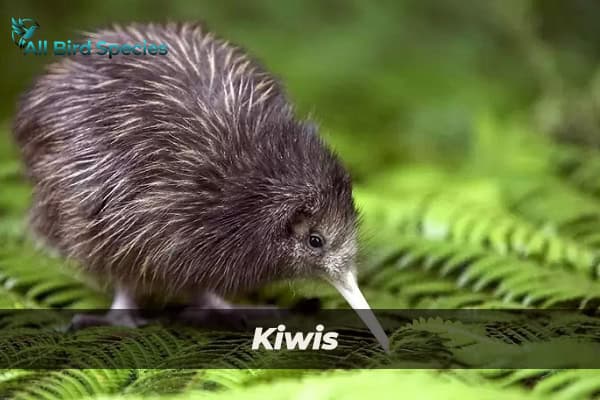
Kiwis have small wings that are essentially non-functional for flight, a long, slender bill, and a keen sense of smell, which they use to forage for insects and worms. Despite their size, kiwis are highly adapted to their environment with a keen sense of hearing and touch, making them excellent foragers in the dark.
5. Cassowary (Genus Casuarius)
- Habitat: New Guinea, nearby islands, and northern Australia
- Height: Up to 6 feet (1.8 meters)
- Weight: Up to 130 pounds (60 kilograms)
The cassowary is one of the most striking and potentially dangerous flightless birds in the world. Known for its vibrant blue and black plumage and a helmet-like casque on its head, the cassowary is a formidable presence in the tropical rainforests and woodlands of its native regions.
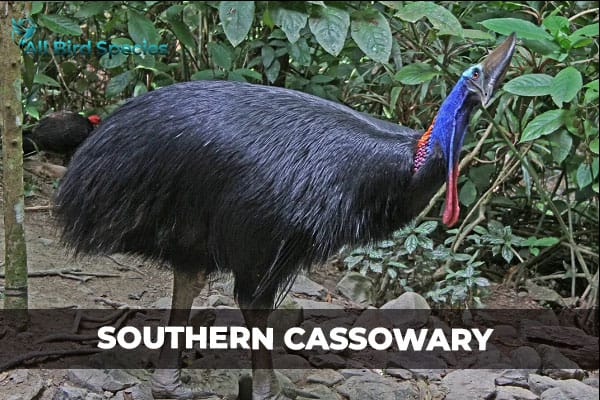
It has powerful legs equipped with sharp claws that can inflict serious injuries if threatened. Despite its fearsome reputation, the cassowary primarily feeds on fruit, seeds, and insects.
6. Kākāpō (Strigops habroptilus)
- Habitat: New Zealand
- Height: Up to 24 inches (60 centimeters)
- Weight: Up to 8 pounds (3.5 kilograms)
The kākāpō, also known as the owl parrot, is a critically endangered species endemic to New Zealand. This nocturnal, ground-dwelling parrot is the world’s heaviest parrot and has a distinctively owl-like face.
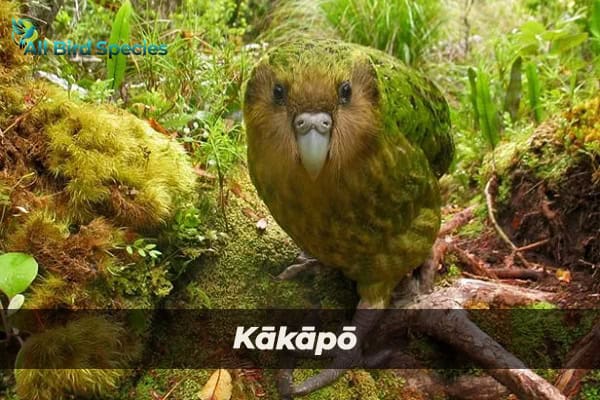
Its flightlessness is a result of evolutionary adaptations to a predator-free environment before humans introduced new threats. Conservation efforts are ongoing to protect this unique bird, which has a very low population and a specialized diet of native fruits and flowers.
7. Rhea (Rhea americana and Rhea pennata)
- Habitat: South America
- Height: Up to 5.6 feet (1.7 meters)
- Weight: Up to 88 pounds (40 kilograms)
The rhea is a notable flightless bird native to South America, with two primary species: the greater rhea and the lesser rhea. Rheas are distinctive for their long legs and necks, which facilitate swift running across open landscapes.

The greater rhea inhabits the grasslands of Brazil and Argentina, while the lesser rhea prefers the scrublands of the Andes. Rheas are social creatures and form large flocks that help protect them from predators. Their diet consists mainly of seeds, fruits, and insects.
8. Weka (Gallirallus australis)
- Habitat: New Zealand
- Height: Up to 18 inches (45 centimeters)
- Weight: Up to 4 pounds (1.8 kilograms)
The Weka is a flightless rail native to New Zealand, characterized by its strong legs and curiosity. Despite its inability to fly, the weka is an adept runner and is capable of quick, agile movements.
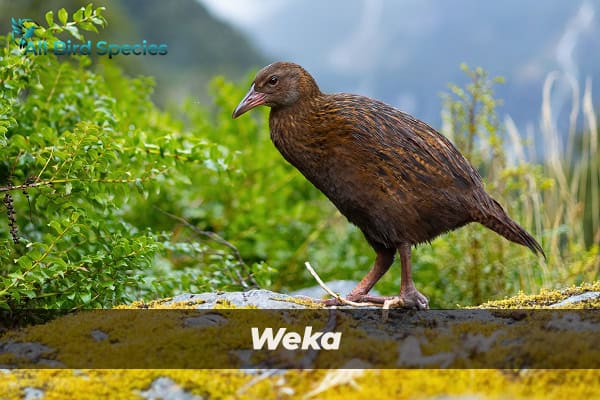
It inhabits a range of environments, from forests to wetlands, and has a varied diet that includes insects, small invertebrates, and plant matter. Wekas are known for their bold and inquisitive nature, which sometimes leads them into trouble as they explore human settlements.
Check Our Previous Articles:
Wrapping Up…
Large flightless birds offer a fascinating glimpse into the diverse ways life has adapted to different environments across the globe. From the towering ostrich of Africa to the elusive kiwi of New Zealand, these birds demonstrate that flight is not the only path to survival. Their size, behavior, and unique characteristics not only contribute to the rich biodiversity of our planet but also remind us of the intricate web of life that sustains it.

